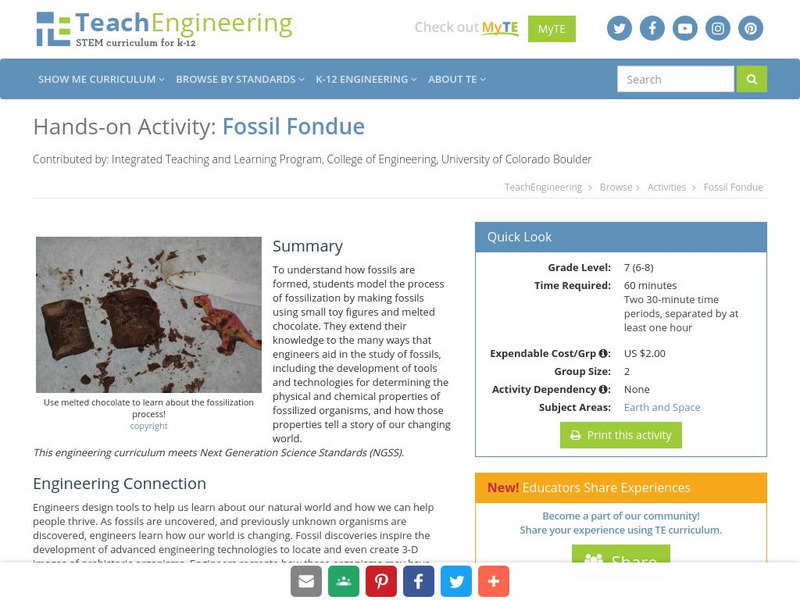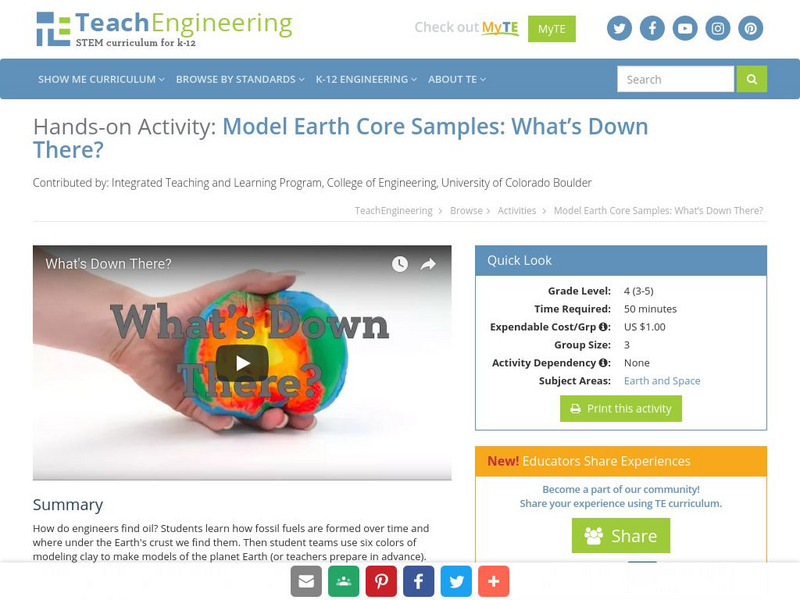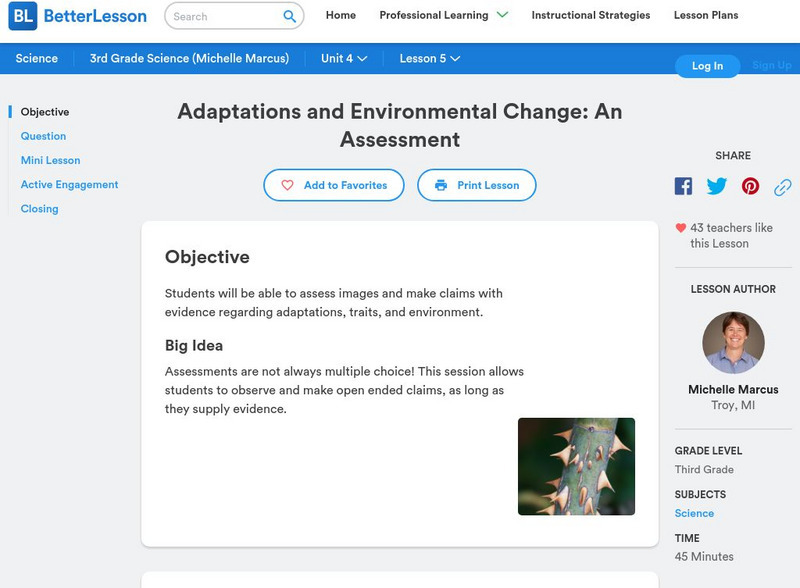TeachEngineering
Teach Engineering: Fossil Fondue
To understand how fossils are formed, students model the process of fossilization by making fossils using small toy figures and melted chocolate. They extend their knowledge to the many ways that engineers aid in the study of fossils,...
Utah Education Network
Uen: Investigation 2 Simulating Fossil Formation
This lesson plan includes directions for 5 different activities for making a variety of fossil types. The fossils included in all five activities are casts, petrification fossils, imprints and preserved fossils. The labs require a number...
PBS
Pbs Learning Media: Whales in the Making
This graphic from Evolution, traces the evolution of whales from land-dwelling mammals to the aquatic creatures we know today. A PDF is included that diagrams the evolutionary process that is believed to have taken place.
Science Buddies
Science Buddies: Biodiesels: Converting Oil Into Clean Fuel
Experiment making biodiesel from different types of oil and determine which oils give the best result. This science fair project from Science Buddies, although in an abbreviated format compared to other Science Buddies experiments, gives...
Children's Museum
The Children's Museum of Indianapolis: Dinosphere
Students will learn how dinosaurs were classified, compare shapes and sizes, and explore how paleontologists make discoveries. They'll analyze how dinosaurs interacted back in the day, and make their own dinosaur drawings and a fossil cast.
Other
Greenpeace: Stop Climate Change
Greenpeace offers an in-depth look at climate change (or global warming). Content includes a look at the cause of climate change, the scientific evidence that supports it, the problems that occur during climate change, foreboding...
Other
Travel Montana: Montana Kids: Maiasaur
The Maiasaur is a kind of hadrosaur, a dinosaur that lived in the Upper Cretaceous Period. Much of what is known about the Maiasaur came from the fossils found at Egg Mountain in Montana. Jack Horner, a well known paleontologist,...
TeachEngineering
Teach Engineering: What's Down There?
During this activity, students will learn how oil is formed and where in the Earth we find it. Students will take a core sample to look for oil in a model of the Earth. They will analyze their sample and make an informed decision as to...
US Department of Energy
Department of Energy: Natural Gas
Natural gas is an abundant resource across the United States, and new discoveries and extraction methods have led to a dramatic rise in shale gas development -- making America the world's leading natural gas producer. We invest in...
Other
Florida Dept. Of Education: Conservation of Renewable and Nonrenewable Resources
In this learning module, students learn to differentiate between renewable and nonrenewable resources, and identify resources that fit into each category. It explains the environmental effects of using nonrenewable resources, such as...
Better Lesson
Better Lesson: Adaptations and Environmental Change an Assessment
Use this assessment to see what your students have learned about adaptations. This type of assessment allows students to observe and make open-ended claims backed up by evidence. Included are a power point presentation, student quiz, and...
University of California
Ucmp: Cyanobacteria
General information on the cyanobacteria, the blue-green algae and the features that make them different from prokaryotic bacteria. Also included are pages that point to more specific info, like life history and fossil records.
Alabama Learning Exchange
Alex: Fred the Fish a Little River Trip
Little River is home to 47 kinds of fish including the threatened "Blue Shiner" Cyprinella caerulea. These fish depend on the good water quality at Little River. This skit allows students to observe pollution's effects on a small scale...
Other popular searches
- Making Fossils With Plaster
- Making Fossils With Cookies
- Making Fossils With Clay
- Making Fossils With Flour
- Science Making Fossils











